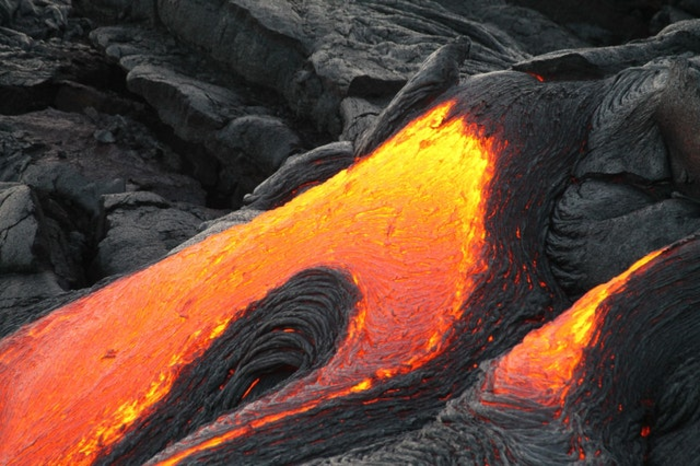What lies beneath: Volcanic secrets revealed
Lava samples have revealed a new truth about the geological make-up of the Earth’s crust and could have implications for volcanic eruptions

[Sept 16, 2021: University of Queensland]
Lava samples have revealed a new truth about the geological make-up of the Earth’s crust and could have implications for volcanic eruption early warning systems, a University of Queensland-led study has found. UQ volcanologist Dr Teresa Ubide said it was previously understood that cooled lava from so-called ‘hot spot’ volcanoes was ‘pristine’ magma from the melting mantle, tens of kilometres under the Earth’s surface.
“This isn’t quite the case – we’ve been misled, geologically deceived,” Dr Ubide said.
“For decades, we have considered hot spot volcanoes to be messengers from the earth’s mantle, offering us a glimpse into what’s happening deep under our feet.
“But these volcanoes are extremely complex inside and filter a very different melt to the surface than what we’ve been expecting.
Related Stories:
“This is due to the volcano’s intricate plumbing system that forces many minerals in the magma to crystallise.”
“This new information takes us one step closer to improving the monitoring of volcanic unrest, which aims to protect lives, infrastructure and crops.”
Hot spot volcanoes make up some of the world’s most beautiful landscapes, such as the Canary Islands in the Atlantic and Hawaii in the Pacific. The international team of researchers analysed new rock samples from the island of El Hierro, in Spain’s Canary Islands, just south-west of Morocco.
This data was combined with hundreds of published geochemical data from El Hierro, including the underwater eruption in 2011 and 2012.
The team then tested the findings on data from ocean island hot spot volcanoes around the world, including Hawaii.
Dr Ubide said hot spot volcanoes are also found in Australia.
“South-east Queenslanders would be very familiar with the Glass House Mountains or the large Tweed shield volcano, which includes Wollumbin (Mount Warning) in New South Wales,” she said.
“Hot spot volcanoes can pop up ‘anywhere’, as opposed to most other volcanoes that occur due to tectonic plates crashing into each other, like the Ring of Fire volcanoes in Japan or New Zealand, or tectonic plates moving away from each other, creating for example the Atlantic Ocean.
“South-east Queensland hot spot volcanoes were active millions of years ago.
“They produced enormous volumes of magma and make excellent laboratories to explore the roots of volcanism.
“There are even dormant volcanoes in South Australia, that could erupt with little warning, that would benefit from better geological markers for early detection.”
Like these kind of feel good stories? Get the Brighter Side of News' newsletter.
Tags: #New_Discoveries, #Volcanoes, #Lava, #Mantle, #Geology, #The_Brighter_Side_of_News
Joshua Shavit
Science & Technology Writer | AI and Robotics Reporter
Joshua Shavit is a Los Angeles-based science and technology writer with a passion for exploring the breakthroughs shaping the future. As a contributor to The Brighter Side of News, he focuses on positive and transformative advancements in AI, technology, physics, engineering, robotics and space science. Joshua is currently working towards a Bachelor of Science in Business Administration at the University of California, Berkeley. He combines his academic background with a talent for storytelling, making complex scientific discoveries engaging and accessible. His work highlights the innovators behind the ideas, bringing readers closer to the people driving progress.



